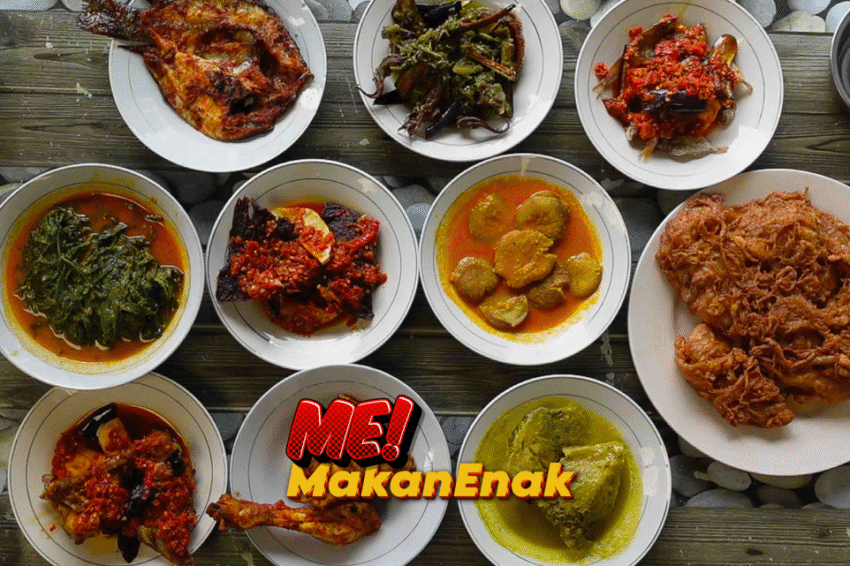makanenak – Indonesia’s rich culinary heritage has once again captured the world’s attention. Several traditional Indonesian dishes have recently earned a place in a prestigious global food list, highlighting the nation’s diverse flavors and cultural significance. From street food favorites to iconic festive meals, these dishes are not only delighting locals but also winning praise from international food critics and travelers.
Recognition on the World Stage
The acknowledgment came after TasteAtlas, an international food guide known for ranking global cuisines, released its updated list of the world’s most popular traditional dishes. Indonesian specialties such as Rendang, Satay, Nasi Goreng, and Soto Ayam secured strong positions, reinforcing Indonesia’s reputation as a culinary powerhouse.
Rendang, a slow-cooked beef dish from West Sumatra, continues to impress with its complex mix of spices and tender texture. It has often been labeled one of the “most delicious dishes in the world” by various food critics. Similarly, Nasi Goreng, Indonesia’s signature fried rice, is a staple not only in local households but also in international restaurants serving Asian cuisine.
“This recognition is a proud moment for Indonesia,” said Putu Ariani, a culinary researcher based in Jakarta. “Our dishes reflect centuries of tradition, cultural exchange, and the richness of local ingredients. Seeing them appreciated globally motivates us to preserve and innovate our food culture.”
The Diversity of Flavors
One of the defining features of Indonesian cuisine is its diversity. With more than 17,000 islands and hundreds of ethnic groups, the country offers a wide range of flavors, techniques, and ingredients. Spices such as turmeric, galangal, lemongrass, and chili are staples in most kitchens, creating bold and aromatic profiles.
Satay, for example, varies across regions, from chicken satay with peanut sauce in Java to Padang-style satay with spicy chili paste. Soto Ayam, a yellow chicken soup, is equally diverse, with versions that include coconut milk, glass noodles, or different spice blends depending on the region. This regional richness is what makes Indonesian food appealing to a global audience seeking authenticity and variety.
Boost for Culinary Tourism
The global recognition of Indonesian dishes is also expected to boost the nation’s tourism sector. Food tourism has become a key driver in travel decisions, with many tourists eager to explore destinations through their local cuisine. Bali, Yogyakarta, and Jakarta already feature culinary tours where visitors can sample traditional dishes at local markets and restaurants.
“Food has become one of the main reasons people travel,” said Ni Luh Putri, a tour guide in Bali. “When visitors hear that Indonesian dishes are ranked among the best in the world, they are even more motivated to try them here, in their place of origin.”
Culinary festivals are also gaining popularity, with events showcasing regional specialties and cooking demonstrations. These initiatives not only attract tourists but also encourage younger Indonesians to take pride in their culinary traditions.
Preserving Tradition While Innovating
While recognition is important, culinary experts emphasize the need to preserve authenticity. Many traditional dishes are still prepared using age-old techniques passed down through generations. At the same time, Indonesian chefs are finding ways to modernize recipes without losing their roots.
Fusion dishes such as Rendang burgers, Nasi Goreng with truffle oil, or vegan versions of Satay are emerging in urban restaurants. These innovations help Indonesian cuisine appeal to younger audiences and adapt to global dietary trends while maintaining its cultural essence.
Global Potential Ahead
The inclusion of Indonesian food in the global list signals vast potential for the nation’s culinary industry. Beyond tourism, it opens doors for Indonesian food products to reach international markets. Packaged spice mixes, instant noodles with traditional flavors, and frozen ready-to-eat meals are increasingly available abroad, allowing Indonesians overseas and curious food lovers to enjoy the tastes of the archipelago.
As Indonesian dishes gain more recognition, the government and private sector are working together to promote the country’s cuisine internationally. Programs such as “Indonesia Spice Up the World” aim to introduce more Indonesian restaurants abroad and increase the export of food products.
For many Indonesians, food is more than just sustenance—it is a reflection of history, culture, and identity. The recent recognition of traditional dishes on a global platform is not only a moment of pride but also an invitation for the world to explore the depth of Indonesia’s culinary treasures.


